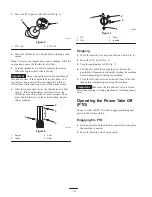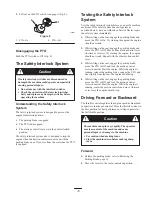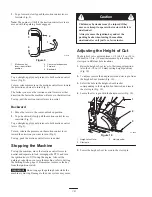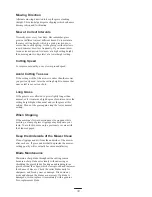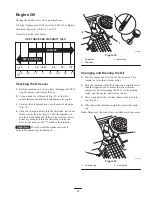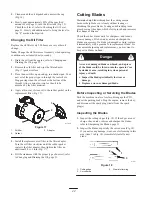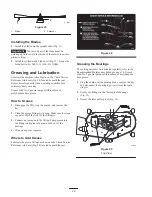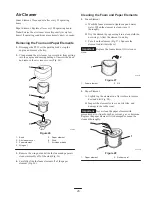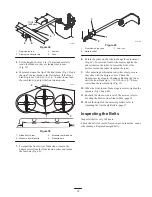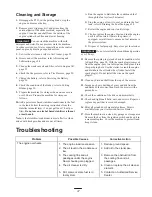
22
5. Clean around the oil dipstick and unscrew the cap
(Fig. 16).
6. Slowly pour approximately 80% of the specified
amount of oil, page 21, into the filler tube (Fig. 15).
Check the oil level; refer to Checking the Oil Level,
page 21. Slowly add additional oil to bring the level to
the “F” mark on the dipstick.
Changing the Oil Filter
Replace the oil filter every 200 hours or every other oil
change.
Note: Change the oil filter more frequently when operating
conditions are extremely dusty or sandy.
1. Drain the oil from the engine; refer to Changing and
Draining the Oil, page 21.
2. Remove the old filter and wipe the filter adapter
(Fig. 17) gasket surface.
3. Place the new filter, open end up, in a shallow pan. Pour
new oil of the proper type in through the center hole.
Stop pouring when the oil reaches the bottom of the
threads. Allow a minute or two for the oil to be
absorbed by the filter material.
4. Apply a thin coat of clean oil to the rubber gasket on the
replacement filter (Fig. 17).
m–1256
1
2
3
Figure 17
1.
Oil filter
2.
Gasket
3.
Adapter
5. Install the replacement oil filter to the filter adapter.
Turn the oil filter clockwise until the rubber gasket
contacts the filter adapter, then tighten the filter an
additional 2/3 to 1 turn (Fig. 17).
6. Fill the crankcase with the proper type of new oil; refer
to Changing and Draining the Oil, page 21.
Cutting Blades
Maintain sharp blades throughout the cutting season
because sharp blades cut cleanly without tearing or
shredding the grass blades. Tearing and shredding turns
grass brown at the edges, which slows growth and increases
the chance of disease.
Check the cutter blades daily for sharpness, and for any
wear or damage. File down any nicks and sharpen the
blades as necessary. If a blade is damaged or worn, replace
it immediately with a genuine Toro replacement blade. For
convenient sharpening and replacement, you may want to
keep extra blades on hand.
Danger
A worn or damaged blade can break, and a piece
of the blade could be thrown into the operator’s or
bystander’s area, resulting in serious personal
injury or death.
•
Inspect the blade periodically for wear or
damage.
•
Replace a worn or damaged blade.
Before Inspecting or Servicing the Blades
Park the machine on a level surface, disengage the PTO,
and set the parking brake. Stop the engine, remove the key,
and disconnect the spark plug wire(s) from the spark
plug(s).
Inspecting the Blades
1. Inspect the cutting edges (Fig. 18). If the edges are not
sharp or have nicks, remove and sharpen the blades;
refer to Sharpening the Blades, page 23.
2. Inspect the blades, especially the curved area (Fig. 18).
If you notice any damage, wear, or a slot forming in this
area (item 3 in Fig. 18), immediately install a new
blade.
1
2
3
m–151
Figure 18
1.
Cutting edge
2.
Curved area
3.
Wear/slot forming







